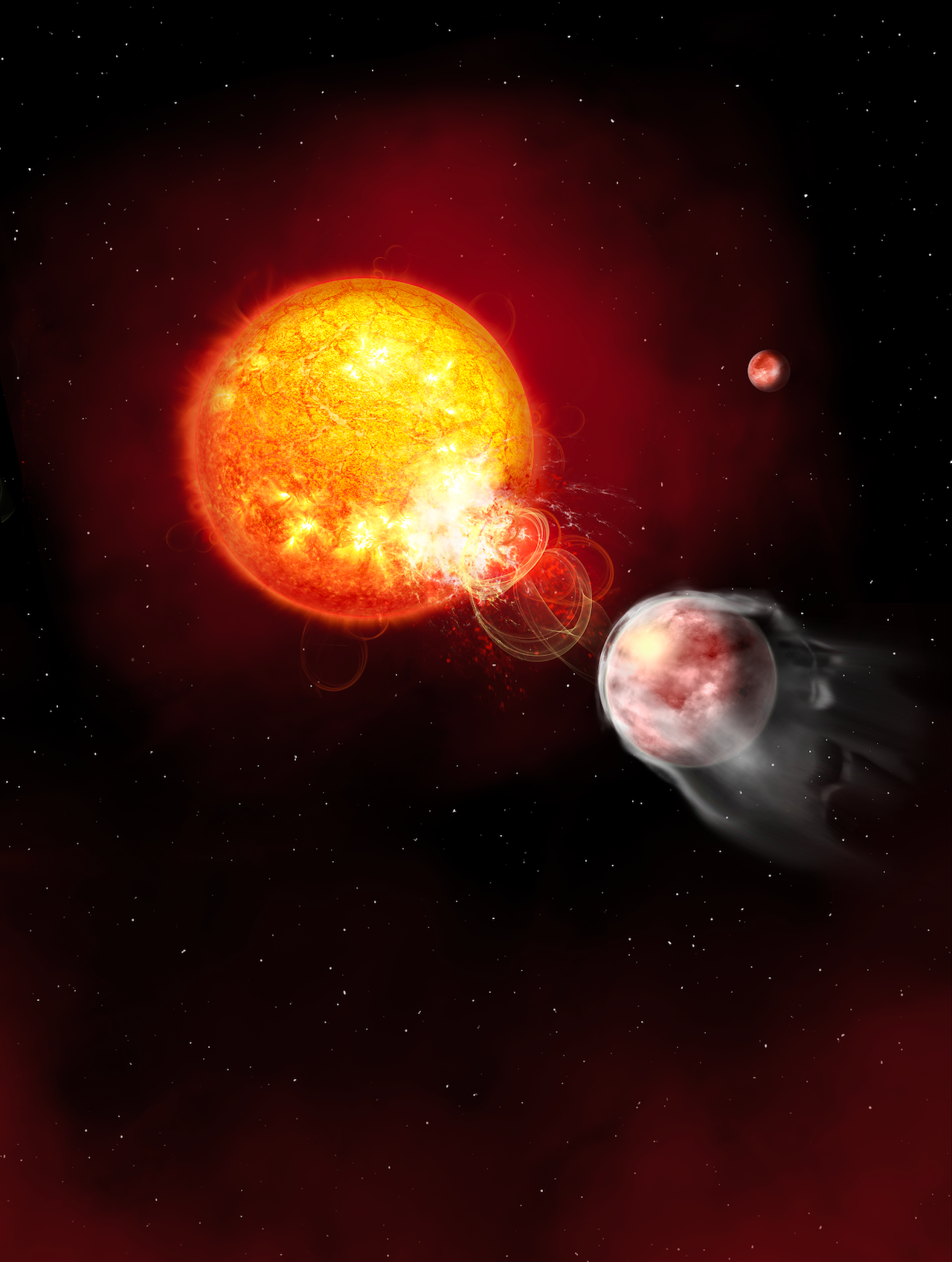Astronomers have known for many years that stars form when the cores of giant clouds of cold molecular material fragment and collapse.
Royal Astronomical Society Press Notice
Ref. PN 01/12 (NAM5)
Issued by: RAS Press Officers
Peter Bond
Phone: +44 (0)1483-268672
Fax: +44 (0)1483-274047
E-mail: 100604.1111@compuserve.com
Mobile phone: 07711-213486
Dr Jacqueline Mitton
Phone: +44 (0)1223-564914
Fax: +44 (0)1223-572892
E-mail: jmitton@dial.pipex.com
Mobile phone: 07770-386133
NAM PRESS ROOM.
The press room phone numbers are:
+44 (0)1223-313724
+44 (0)1223-313754
+44 (0)1223-315553
RAS Web site:
http://www.ras.org.uk
UK National Astronomy Meeting Web site:
http://www.ast.cam.ac.uk/~nam2001/
Astronomers have known for many years that stars form when the cores of giant clouds of cold molecular material fragment and collapse. However, the details of the star formation process are poorly understood. In particular, the smallest fragments that can collapse to form very low mass stars or sub-stellar objects have not yet been identified.
Dr. Philip Lucas (University of Hertfordshire) and Dr. Patrick Roche (Oxford University) controversially announced last year that they had directly observed 13 faint points of light in Orion (a giant stellar nursery where thousands of stars are being born) which appeared to have masses closer to those of the giant planets -- a few times more massive than Jupiter in our Solar System -- than the stars.
On Tuesday 3 April, the same pair will announce at the UK National Astronomy Meeting in Cambridge that they have confirmed their discovery of 'free floating planets' in the Orion Nebula. Their measurements of the spectrum of the infrared light from 20 objects in the Nebula show the characteristic signature of water vapour. This confirms that these objects are indeed young, low-mass bodies, and that the faintest of them are of planetary mass. These planetary mass objects can only be seen because they are very young and still warm after the process of formation.
Dr Lucas commented, "It's exciting to find these planet-sized objects floating around in space, unlike planets such as our Earth which orbit a star. Our new results provide the first steps in the exploration of their physical properties."
"The identification and study of these objects is extremely interesting in itself," added Dr. Roche, "but it can also aid our understanding of the star formation process, which is one of the major mysteries in astronomy."
This proof is sure to add fuel to the controversy of how such objects were born. Are they actually planets, thrown out of their solar systems and now floating in space, or have they been formed directly from a gas cloud in space, much like a normal star is?
There is also controversy over how to classify these "inbetween" objects. Some astronomers say that as these may have been formed like a star, they should not be called planets. The authors suggest that a new term -- planetars -- may be a good compromise.
FINDING THE EVIDENCE
Lucas and Roche were following up their discovery of these objects last year, when they measured faint points of light in the Orion Nebula -- a vast cloud of gas and dust that can be seen with the naked eye as the middle 'star' in the sword of the constellation of Orion. Their observations were made in infrared light, using the United Kingdom Infrared Telescope at Mauna Kea Observatory, Hawaii.
This sparked a wide controversy among scientists, with some arguing that the result was a mistake because the planets might be normal stars far behind Orion and just happened to look like very young planets.
Now Lucas and Roche have used the same telescope to analyse the light from these giant worlds at different frequencies and shown that they must be inside the Orion Nebula. By studying the spectrum of the light from the planets, they were able to measure the temperature of the objects, and then, with the use of theoretical models, derive their masses.
The spectroscopic analysis shows strong absorption features due to water vapour in the atmospheres of these objects, which shows that they are not hot enough to be distant stars.
The results have been strengthened with the help of theoretical work on the atmospheres by France Allard and Isabelle Baraffe of the Ecole Normale Superieure at Lyon in France and by Peter Hauschildt at the University of Georgia in the United States. Lucas, Roche, Allard and Hauschildt analysed 20 of the brown dwarfs and planet candidates in the Orion Nebula to confirm the result.
The so-called 'planets' float in space by themselves, not orbiting any star. They are thought to be between 5 and 13 times as massive as the planet Jupiter, so they are rather large by the standards of our Solar System and are most unlikely to support life.
However, these worlds are not massive enough to shine by nuclear fusion, the process that powers the Sun and the stars. Nor are they massive enough for even the meagre nuclear reactions that occur in 'brown dwarfs', objects with masses between those of planets and stars.
The scientists admit that there is a slight chance that they are misinterpreting the data. If all the theoretical calculations for these poorly understood objects are wrong, or if they are far older than the stars and brown dwarfs around them, there is an outside chance that they are actually 20 or 30 times the mass of Jupiter -- too big to be called planets. However, all the evidence found so far points to them being free-floating planets, and other astronomers in Japan and Spain are beginning to find signs of more and more planets in other nebulae like Orion.
CONTACT:
Dr Phil Lucas
Dept of Physical Sciences
University of Hertfordshire
College Lane
HATFIELD
AL10 9AB
Phone: +44 (0)1707-286070
Fax: +44 (0)1707-286142
E-mail: pwl@star.herts.ac.uk
Dr Pat Roche
Dept of Astrophysics
Nuclear and Astrophysics Lab.
Keble Road
OXFORD
OX1 3RH
Phone: +44 (0)1865-273338
Fax: +44 (0)1865-273418
E-mail: pfr@astro.ox.ac.uk
IMAGES ARE AVAILABLE ON THE WEB AT:
www-astro.physics.ox.ac.uk/~pwl/trapl.jpg
www-astro.physics.ox.ac.uk/~pwl/trapl.gif
www-astro.physics.ox.ac.uk/~pwl/trapl.tif






























